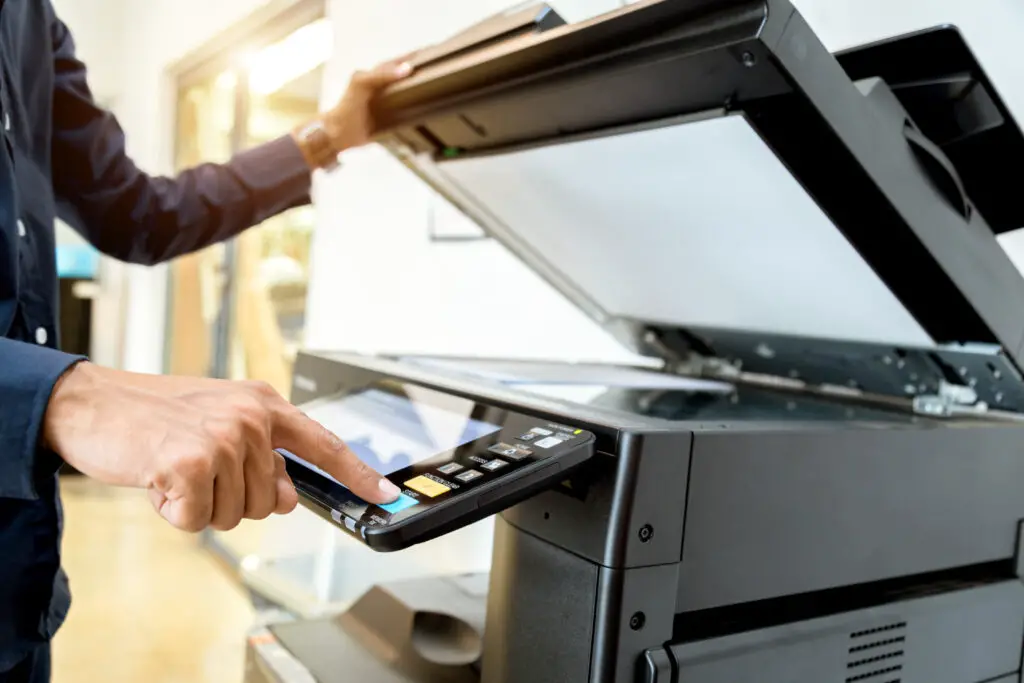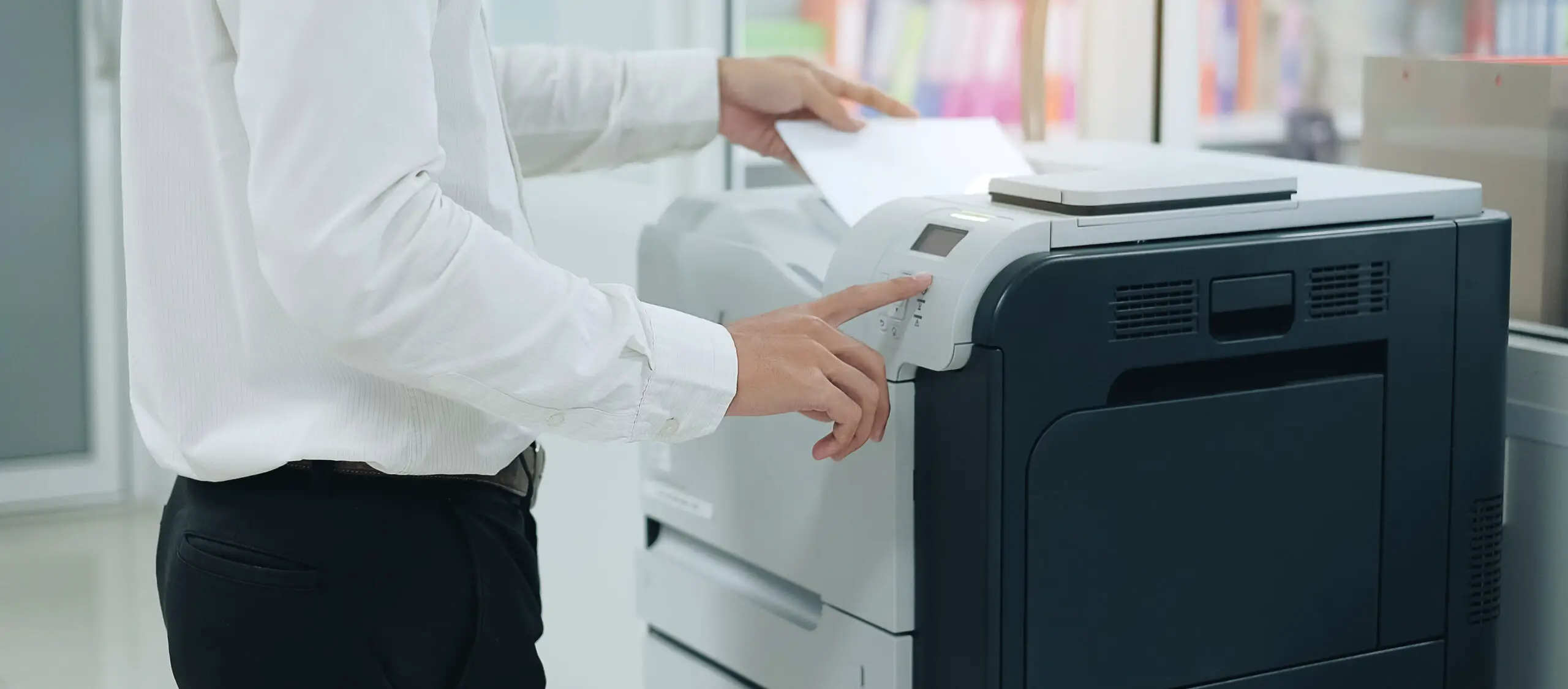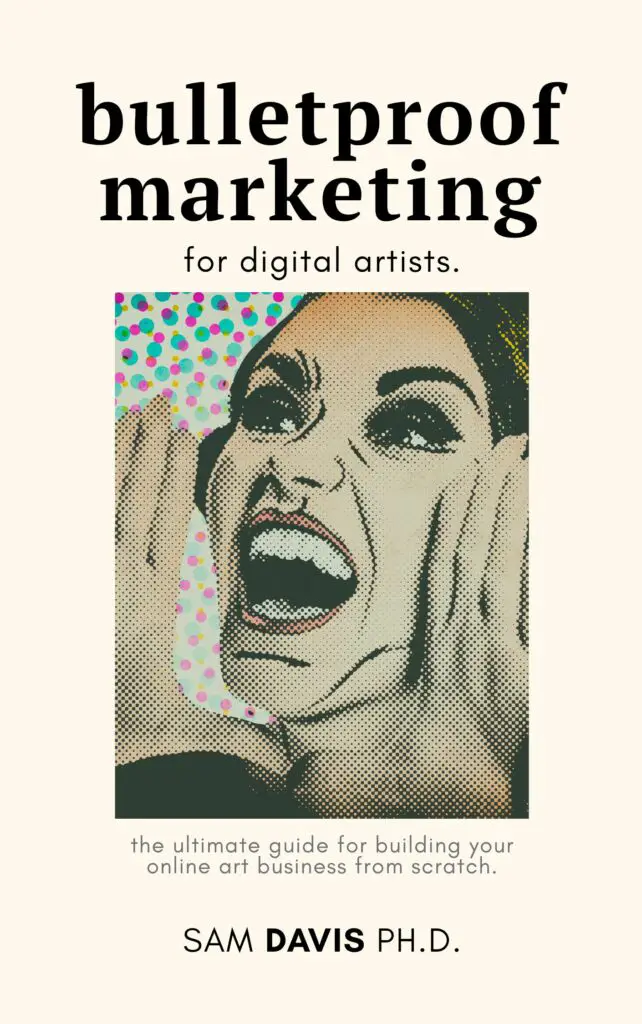There are many factors to consider when deciding which type of printer is right for your art business. Laser printers and inkjet printers both have their pros and cons, and it can be difficult to decide which one is best for you. In this blog post, we will discuss the differences between laser printers and inkjet printers, so that you can make an informed decision about which type of printer is right for your art products.
In my home, I have two color laser printers alongside a cheaper color inkjet printer. I've also recently added an EcoTank printer to my line up. Inkjet printers tend to print more slowly and have a higher printer ink cost, but have more vibrant prints. Let's dive in and see which type of printer best fits your needs!

1. Laser Printer Speed Vs. Inkjet Printing Speed
Most people don't really think about how a printer works, they just know that when they hit the print button, somehow their computer magically communicates with the printer and then out comes a hard copy of what was on their screen. But have you ever wondered how different types of printers work? It's key to understanding the differences in speed.
How does an inkjet printer work?
Inkjet printers are the most common type of printer. They work by propelling tiny droplets of ink onto paper to create an image. Most inkjet printers have between 4 and 8 cartridges of ink that are combined to create different colors. When you hit the print button, the ink is ejected from the cartridges onto the paper through a series of nozzles. The size of the droplets and the rate at which they are ejected determines the resolution of the print. More expensive inkjet printers tend to have higher resolution and a faster printing speed.
Because inkjet printers ultimately use ink, their final products are usually pretty vulnerable to the elements – like water, oil from fingers, and abrasion. These are all things that are pretty common for say, stickers. So if you choose to print stickers with an inkjet, you'll need either some sort of lamination or “use and care” guidelines for your customers.
How does a laser printer work?
Laser printers use a high-powered laser beam to draw images onto a drum. The .laser printer drum is then coated with toner (a dry powdery substance) which adheres to the areas where the laser beam hits. The paper is then rolled over the drum, picking up the toner as it goes. The toner is then fused to the paper by heat to create a permanent image. Laser printers usually have higher printing speeds than inkjet printers because they don't have to pauses to allow for drying time between each page.
Because the toner fusion is a chemical process, it is easier to get waterproof papers for laser printers. These papers, once printed, should hold up to the most common elements of sticker printing. But your colors may not be as vibrant as on an inkjet printer. If your customers are very rough with your stickers, you may still need additional lamination or other protection.
So, which type of printer is better? That really depends on your needs. If you need to print high-quality color photos or art prints, then an inkjet printer is probably your best bet. However, if you need to print more resilient materials, then a laser printer is probably a better choice.
2. Print quality: Inkjet vs. Laser
Both inkjet printers and laser printers can have excellent print quality. In most professional print shops, you'll find a mix of both types of printers. The real determination of quality for inkjet printers and laser printers is half hardware, and half toner/ink quality.
Inkjet vs. Laser: It all depends on the purpose.
A monochrome laser printer (black and white only) will prioritize speed and clarity of written text. A monochrome laser printer would probably beat out an inkjet printer for quality of print of say, a novel. But an inkjet system would most likely win in the monochrome printing of say, a photograph.
I've found that large blocks of color are the easiest place to investigate print quality. In most laser printers, you can sometimes get lines through larger blocks of solid color. They also tend to wash out very subtle gradients. Inkjets don't have the line problem because they go literally pixel by pixel / line by line.
Stickers are great for laser printing
On the other hand, for small sticker printing, I rarely have that problem. My laser printer successfully prints pages upon pages of stickers on waterproof paper with no need for additional lamination or other treatment. My color laser printer can handle glossy photo paper, matte printing paper, and everything in between. I would trust my laser printer to handle both photo printing and document printing, although I rarely do either.
Inkjet Vs. Laser: Art Prints
That being said, for art prints, my laser printer couldn't handle the type of paper that I wanted. I wanted to print on embossed paper – paper that looks and feels like canvas. For that, inkjet cartridges win every single time. The liquid ink has time to soak into the paper and produce a realistic looking watercolor.
It's also easier to find a consumer grade wide format printer in the inkjet printers category. Check out my in-depth review of the Epson Ecotank ET-8550 here – it doesn't even use inkjet cartridges!
3. Cost of inkjet ink cartridges vs laser toner
The upfront cost of laser printing is always going to be more than inkjet ink cartridges. The running joke for a long time has been that it's cheaper to buy a new printer than it is to buy ink cartridges – and any toner cartridge is guaranteed to be worse.
The fact is that printer companies make their money on the ink, not on the printer. Technology for printers hasn't improved much, but ease of use and ease of refill for inks? That's where the real competition is.
A note about brand name ink
My laser printer's toner cartridges, brand name, cost about $120 a piece at the time of writing (October 2022). You can buy generic toner cartridges, and they work fine for basic home printing. But I wouldn't recommend generic laser toner OR a generic ink cartridge for your art business.
I tried it once. I had lines in my work for days and I spent more time, money, and paper trying to fix my print jobs than the ink saved me. I've heard it can also ruin your print heads, but I'm not sure on that. Either way, stay with your brand name for professional printing.
Inkjet Ink Cartridges – Sustainability
Many inkjet printers are moving towards a refillable ink tank system and away from ink cartridges. This is because inkjet cartridges – any printer cartridge, really – are bad for the environment. If you're an infrequent printer, it's not a big deal. But I go through a LOT, and ecological safety is important to me.
The EcoTank ET-8550 is a great example of refillable ink tanks and consumer grade tank printers. Inkjet printing can make this switch easy, but laser printers are harder because of the technology. Thankfully, manufacturers like HP offer free return labels for cartridge recycling. Please, use them!
Final thoughts about Inkjet Vs. Laser
Inkjet or laser – which is the right printer for your business? It depends what you're printing, how often you print, and how much money you want to spend up front.
If you're looking for high-quality color images or photographic prints, I would recommend an inkjet printer. However, if you need speed and resilience of your final printed product, rely on laser printers.
Here's some more information about printers on our website:

